Prints vs Printmaking
With so many types of prints in the market these days, it can be tricky to navigate the differences between the various types. Though they sound quite similar, there’s quite a large difference between prints and print making. Print making is a process of hand making and pressing using inks, whereas prints are simply reproductions of an original painting or photograph. Dive deeper into the variances of both below.
Reproduction Prints
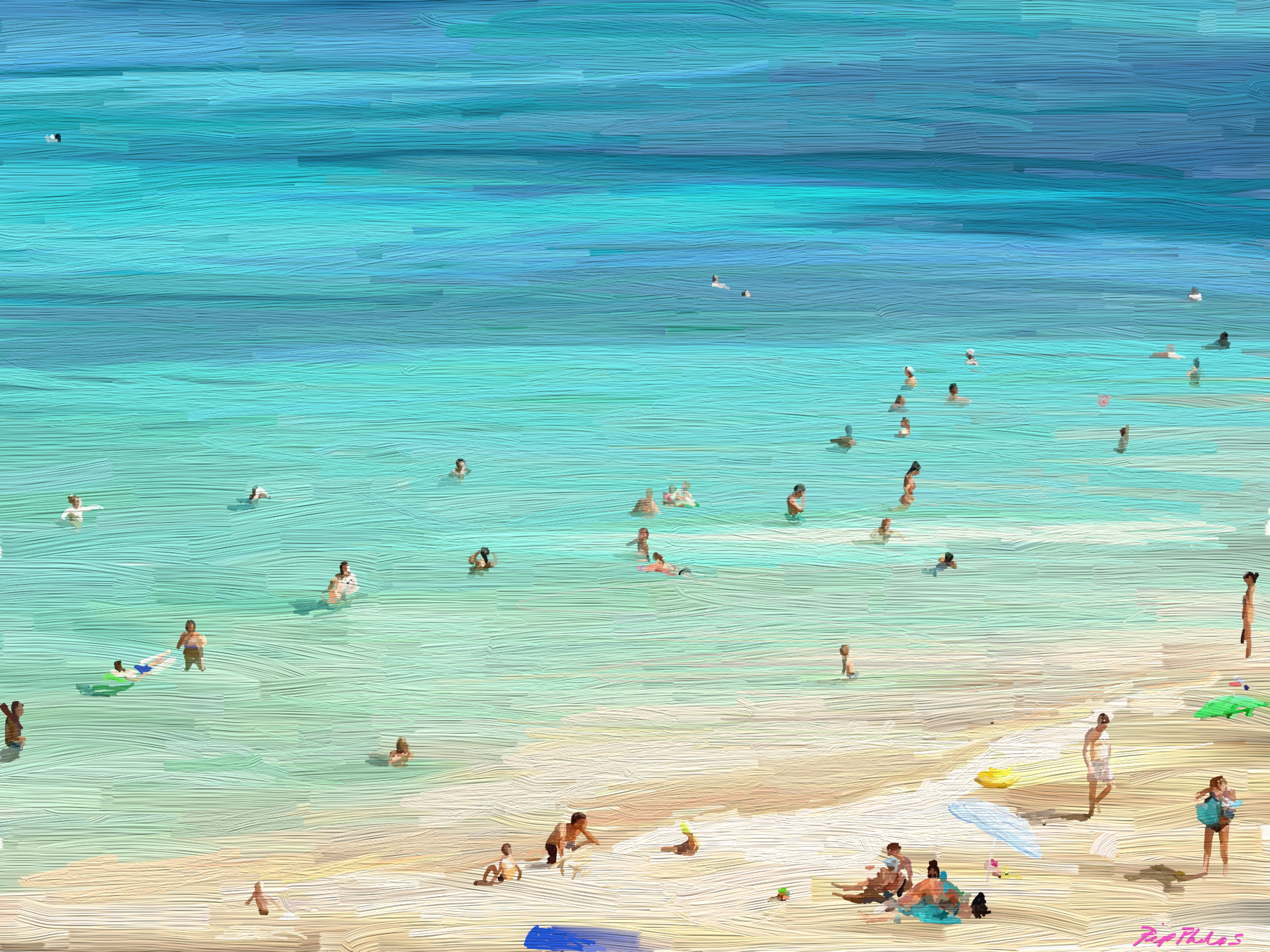
Beach Day by Pip Phelps is a limited edition print of an original painting, sold in a run of 25.
Reproduction prints are high quality copies of an original painting or photograph, sold as either limited editions or open editions. With limited runs, you’ll often notice higher value than with open editions due to their scare nature. These prints are often produced via a digital photograph of the work which is reprinted onto quality paper that will not degrade as they age – look out for papers with a fibre base which will stand the test of time with archival quality inks that won’t fade. Prints like this are often an affordable entry point into collecting art, especially when you fall in love with original artworks that have prices in the thousands!
Linocut Printmaking
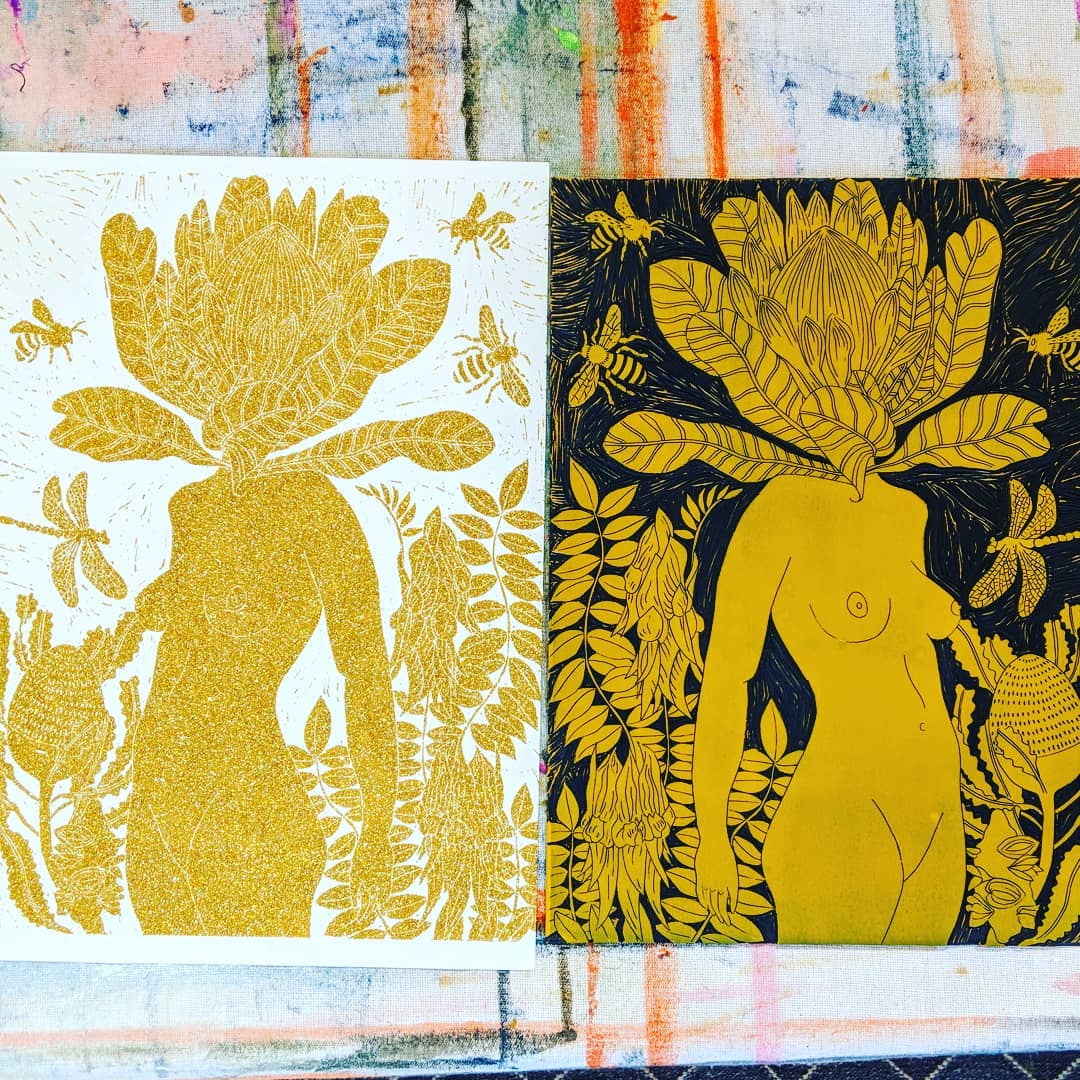
The original carving and final print of Marinka Parnham‘s sparkly golden linocuts. Each one is hand carved and pressed, making every print unique!
Linocut prints are one of the most commonly used forms of printmaking. You might even recall doing some of your own in a high school art class! There’s a lot of blood, sweat and hard work involved in this process, with each panel of linoleum hand carved using specialist tools. Carving away at the surface in this manner is called relief printmaking. We’re not kidding about the blood – when learning this process, cuts are common! Professional artists struggle less with these injuries thanks to years of practice and can easily produce masterfully intricate designs.
The carved panel is then covered with ink and pressed firmly onto paper to produce the final print. Because each print is done by hand, they’re prone to having unique eccentricities in each edition, making every one special!
Woodcut Printmaking
Another relief style of printmaking, woodcut prints are carved into a block of wood instead of linoleum. The printing process is the same, with ink and hand pressing and they have a similar graphic quality as they’re primarily comprised of lines and shapes.
Melbourne artist Matthew Broughton is a fan of this style, because “printmaking is a very methodical way of working, as it takes many hours to design and then hand carve the wood block prior to printing. The printing of the wood block is another art in itself, each print is unique and has a certain character.”
Hokusai’s The Great Wave off Kanagawa is perhaps the most famous example of woodblock printing!
Collagraph Printmaking
Collagraph prints give printmakers an opportunity to bring texture into their prints. Rather than carving away lines and shapes on a surface, this style of printmaking involves adding to the surface to create thin layers of texture and detail. The collage approach is where the name comes from!
Once the collage is complete, the surface is covered with a medium before ink is rolled onto the surface and pressed onto paper. It’s a more subtle approach than the dramatic contrast of woodcut and linocut, and leads to some truly interesting and spectacular prints!
Engraving Printmaking
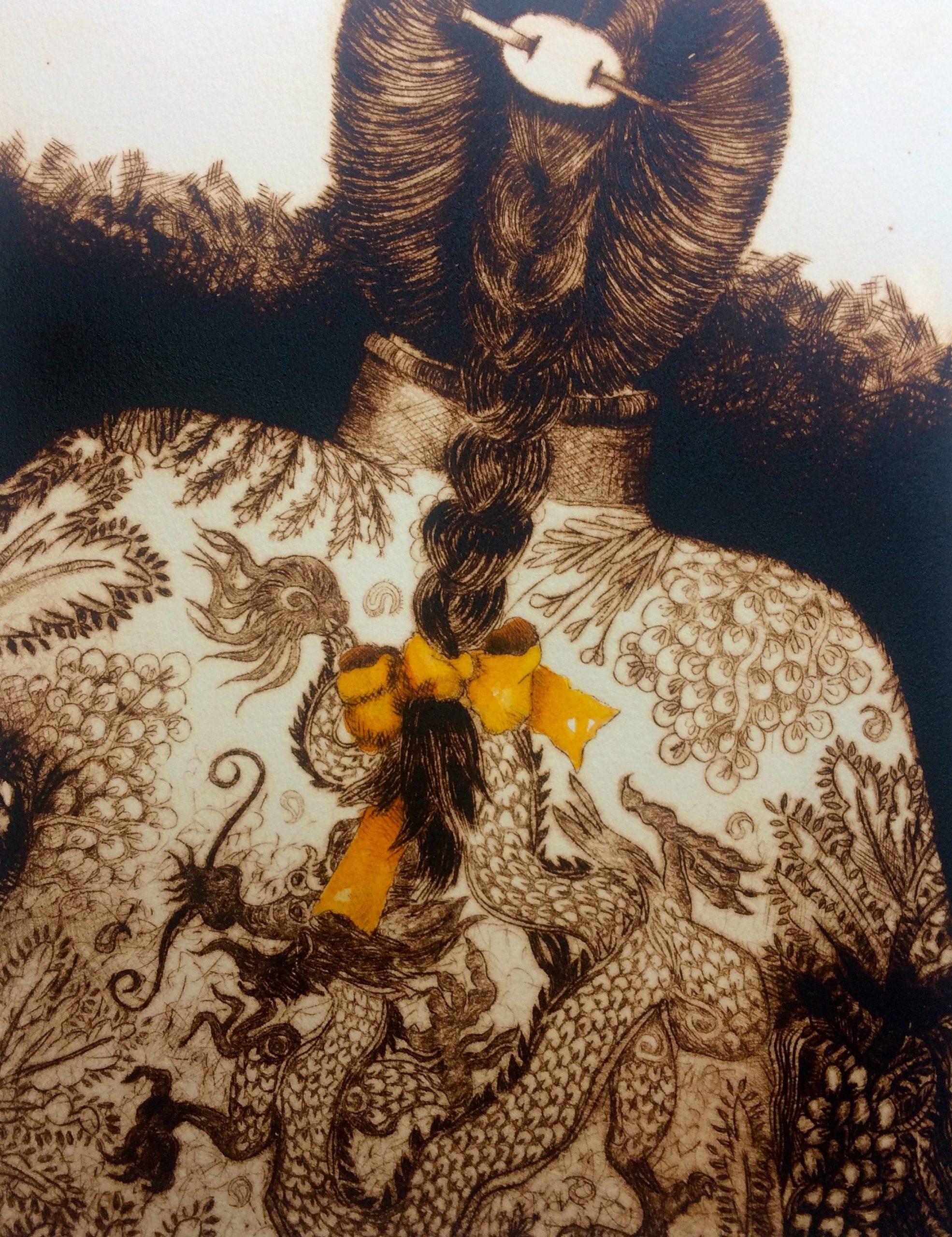
Evening Thoughts Ed. 1 of 10 by Jennifer O’Young is a drypoint etching – which involves using a needle-like tool to engrave the surface of a plate. This stunning piece is finished off with watercolour for a splash of orange!
Just as it sounds, engraved prints are created in an Intaglio style that uses tools to carve the surface of a plate. While it sounds simple enough, it’s one of the more difficult methods in practice. Once the plate is engraved, ink is added to the surface and then wiped away so that it remains in the grooves – adding shadow into the lines. This method leaves little room for mistakes and historically took artists years and years to perfect – so no surprise that etching soon took over as the method du jour.
Intaglio printmaking comes from the Italian phrase intagliare – “to cut in”. It covers every technique from engraving, to drypoint to etching and more.
Etching Printmaking
Etching is a more refined way of engraving a plate. Instead of hand carving, the plate is ‘etched’ with chemicals and acids. Another Intaglio style, this process makes it easier to carve precise lines with minimal mistakes. First the metal plate is covered with a thin layer of wax-like material before the the design is lightly scratched out with a fine needle-like point. After varnishing the back, the whole plate is immersed in acid, which only affects the metal etchings and eats away at the metal to deepen the lines. The wax-like layer protects the covered areas from the chemical so they remain intact.
Artists get creative by playing with the time the plate is immersed, the concentration of the acid and by giving different areas different levels of exposure. This allows them to create different levels in the final print.
Photographer Silvi Glattauer’s photogravure process works in this manner, where she uses acids to etch the photograph onto a plate before hand-pressing it onto fine art paper. Watch her process in the video above!
Monotype Printmaking
Monotype prints are a style of planographic printmaking. Unlike intaglio or relief printmaking, planographic prints do not involve changing the depth of the surface. Monotypes occur on the one plane and the technique involved is closely related to drawing on paper. The design is drawn onto a glass plate using inks and then printed in reverse onto paper, making for a simple process. Ink can be wiped off the plate to remove it or even add texture.
Another method in monotypes is to scratch the paper when it’s adheres to the inked plate. Where the paper is scratched, the ink will print.
Given the simple process, artists are often drawn to this process and the chances it gives to be creative – for the possibilities are endless!
Lithograph Printmaking
Lithography is another form of planographic printing. Fundamentally based in the premise that oil and water don’t mix, lithographs are created by intermixing areas that repel and attract ink on a plate to create the image. Traditionally, oil, fat or wax was drawn onto a limestone plate to create the ink-repellant surface, however contemporary printmakers use polymer on a plastic or metal plate.
Compared to other styles of printmaking, it allows for a wider range of tones and marks in the final print and makes printing with multiple colours easier.
Fun fact: Lithography was invented in 1796 by Alois Senefelder as a cheap way to print theatre posters!
Screenprinting
Made famous by Andy Warhol, screen printing uses stencils to block out sections of colour. While silk is no longer used, these stencils are still called silk screens in honour of their heritage. The screen is placed on top of the paper, and a squeegee tool is used to push the ink across, giving it contact with the paper. This results in clean lines and solid blocks of colour, and can be layered for multiple colour effects.
While we often use the term ‘print’ to describe both reproduction prints and hand-crafted printmaking, it’s clear there’s a vast difference between the level of skill and technique involved in the two. Printing is a broad category that can be broken down to cover many styles of transferring ink onto paper and it is interesting to see the many creative ways artists have done this over centuries. While Bluethumb’s print section groups all these together for simplicity, it’s important to pay attention to the medium description in the artwork listing to understand the exact processes that went into the work – and whether it’s on long-lasting materials.

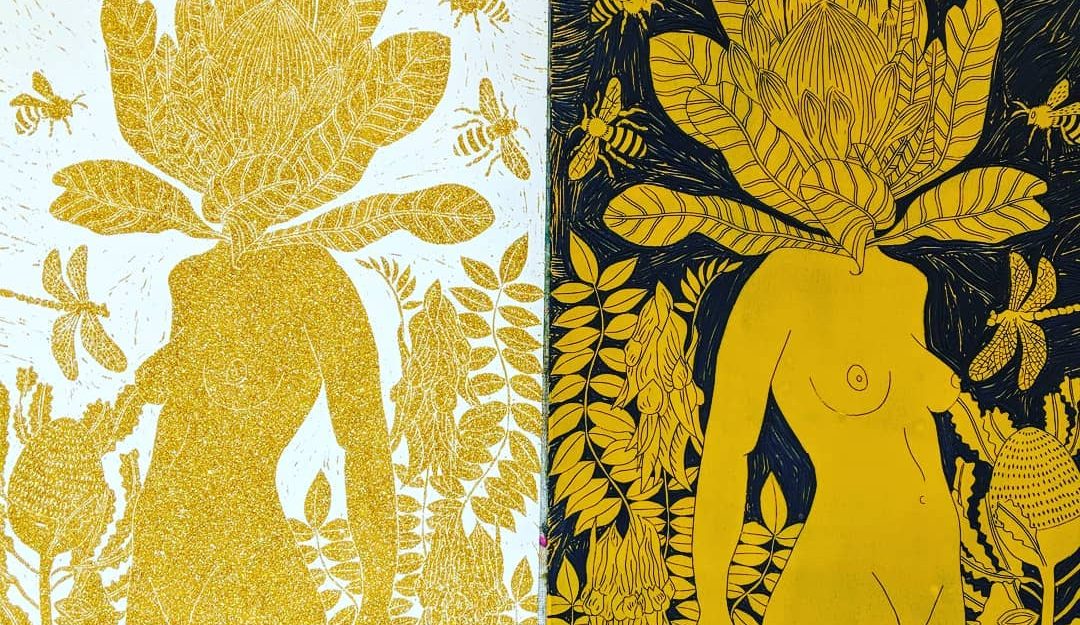
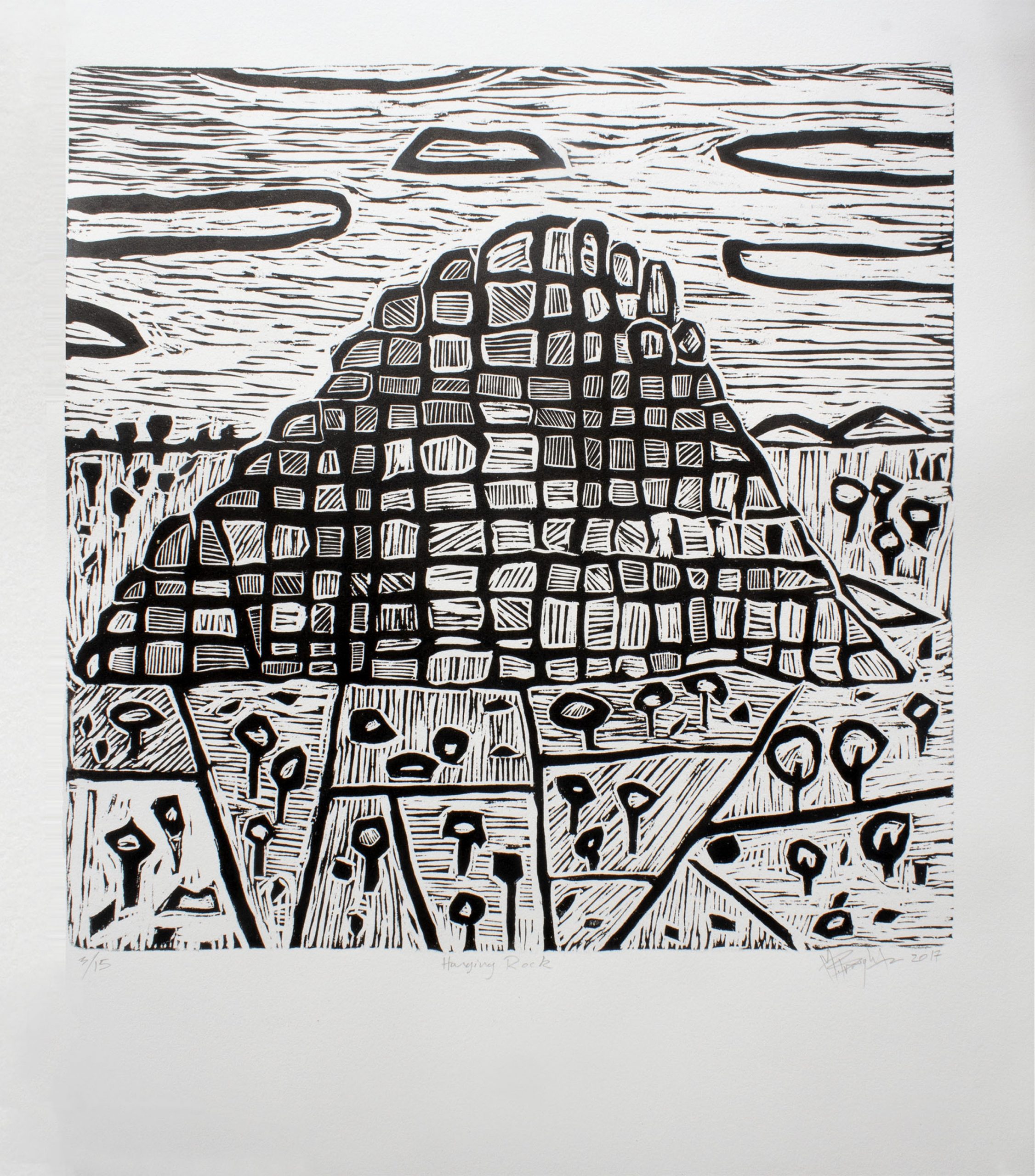
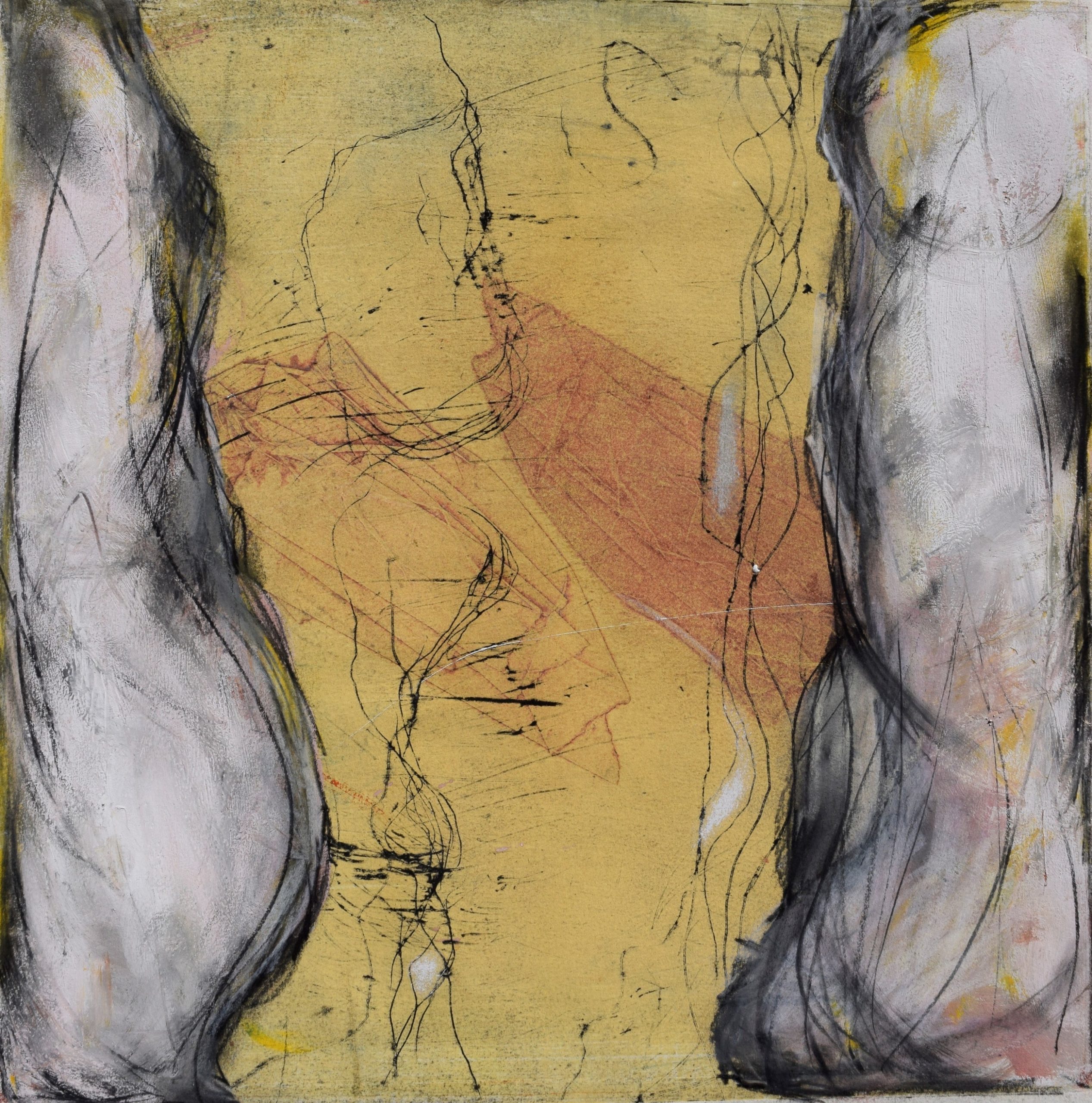
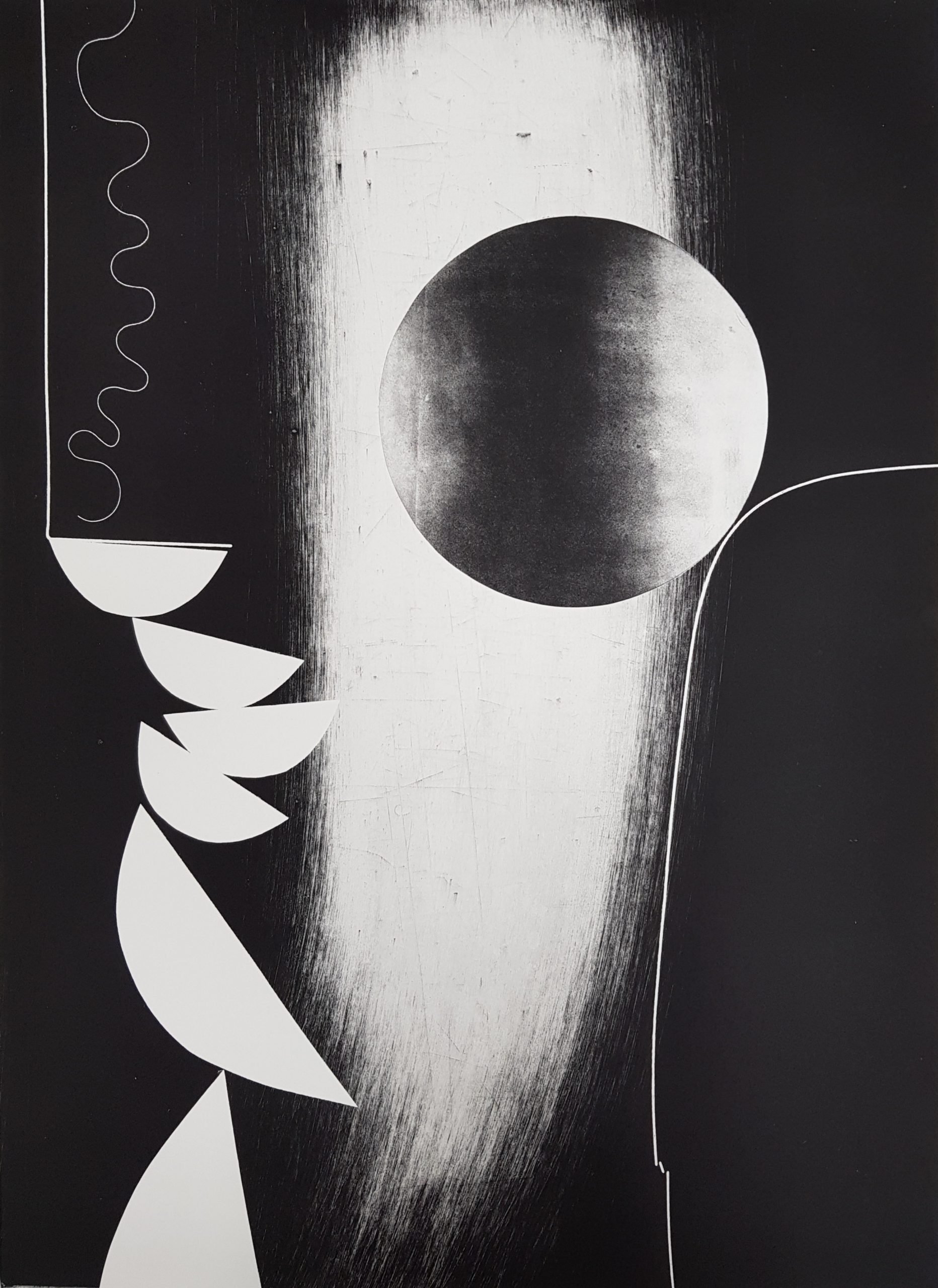
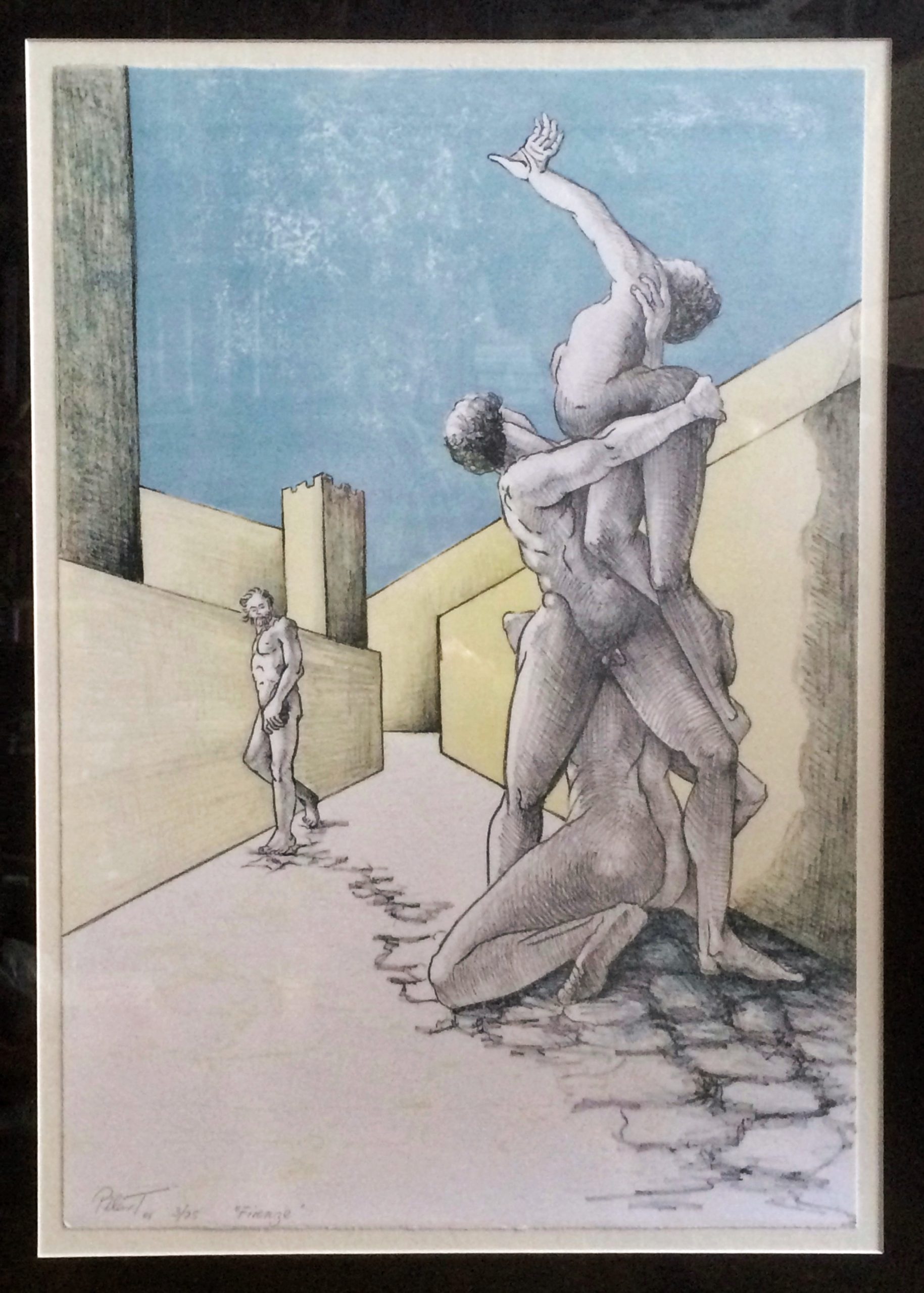
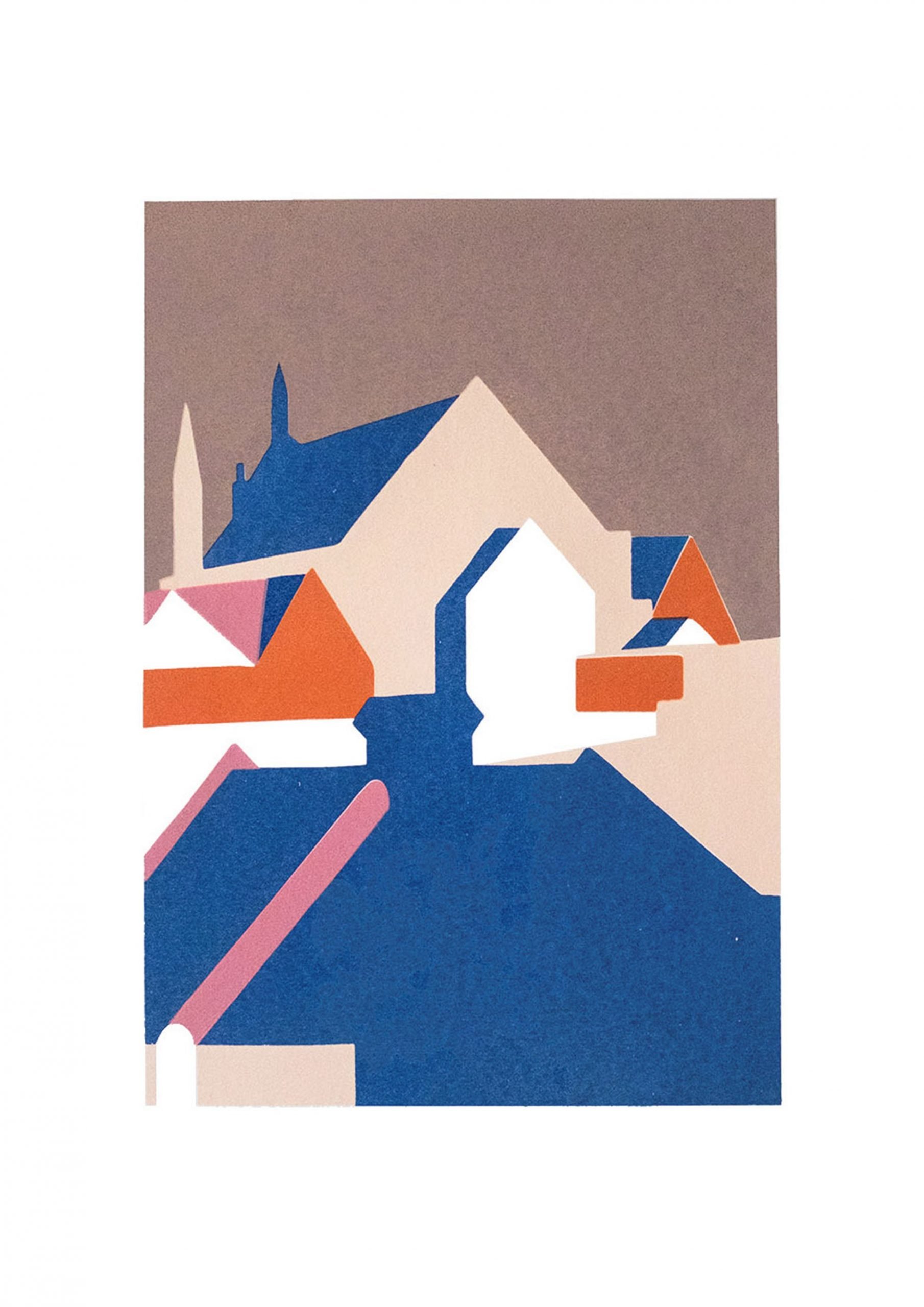
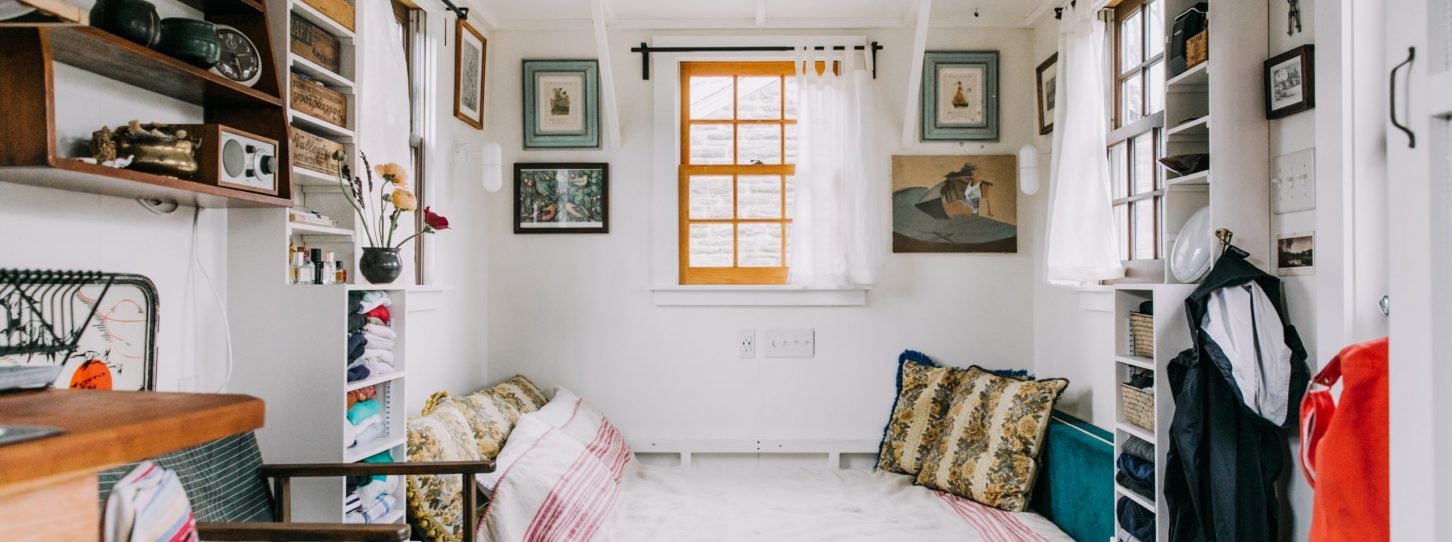
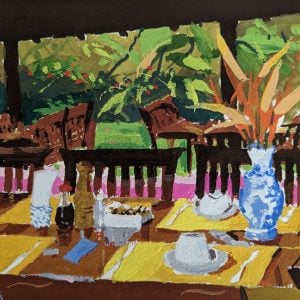

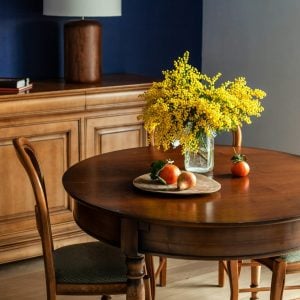
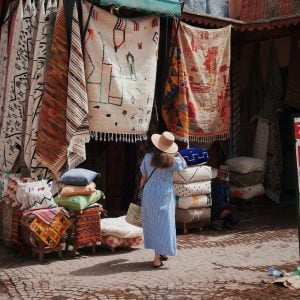






Fantastic, i have to say about time😁😁😁
OH YESSSS!!! Thank you so much. I’m sure all the printmakers out there will be doing the happy dance. Thank you for educating and informing people about the difference between cheap shop prints and actual PRINTS by Artists who work long and tirelessly to make these works of art in a labour intensive way. You said you would do this and now it’s done. Feeling very grateful
Excellent educational information on print making. However, I create original artwork using Photoshop, Illustrator and Procreate. I Just happen to print my original artwork using the Giclee method. They are limited edition prints, signed, dated and with the number in the run recorded on the print. My prints are not reproductions/copies of an artwork that was created using a different medium. (Oil or acrylic painting) They are originals. The image file on my computer could be compared with a piece of metal, lino or a wood block that I have drawn on or cut away or etched preparing for the printing. Each of my artworks take many days to complete. In constructing my artwork I use all the same strategies as a painter such as: Composition; colour theory and the elements and principles of design. I would love to be able to sell my digital work via Bluethumb. Digital artwork is a legitimate art medium (David Hockney) I would like you to consider my predicament and find a way to accomodate the sale of my digital artwork. Regards Richard Impey
Hi Bluethumb,
I am currently working with gelatin printing methods. I am wondering if I can make and sell limited editions of my original works? Many thanks,
Ros
Hi Ros,
We’d be happy to answer this in more detail for you via email – shoot us a message at help@bluethumb.com.au 🙂
nice article